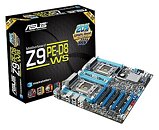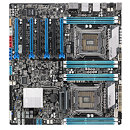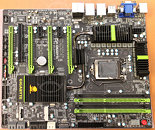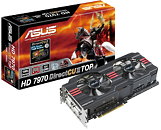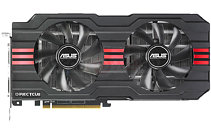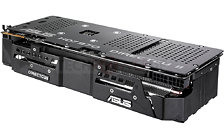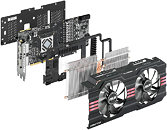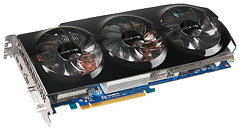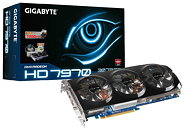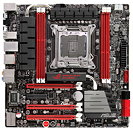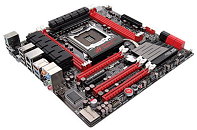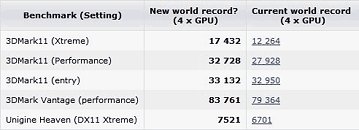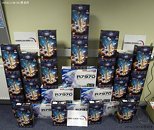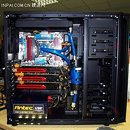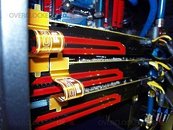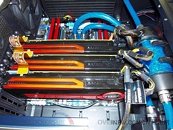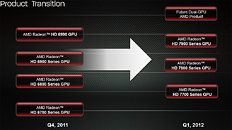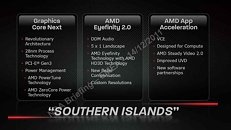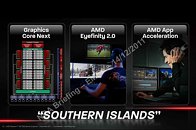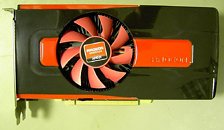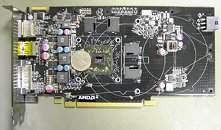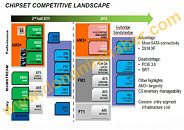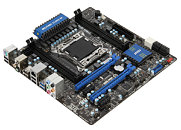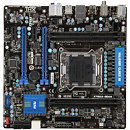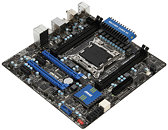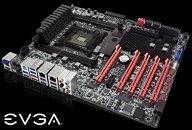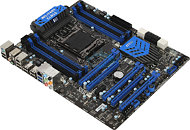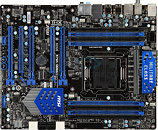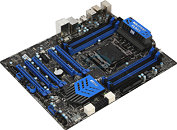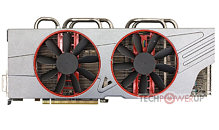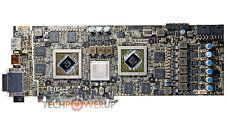
ASUS Makes Z9PE-D8 WS 2P-LGA2011 Motherboard Official
ASUS made its workstation-grade Z9PE-D8 WS motherboard official. The board is built for 2P Xeon E5-2600 series processors in the LGA2011 package, is based on the Intel C606 "Patsburg" chipset, and is built in the 30.5 x 33 cm EEB form-factor. Each of the two sockets is wired to four DDR3 DIMM slots, supporting quad-channel memory, each. Up to 256 GB of registered DDR3 memory is supported.
Expansion slots include four PCI-Express 3.0 x16 (blue), two PCI-Express 3.0 x16 (electrical x8, top two black), and one PCI-Express 2.0 x16 (electrical x4, bottommost black). 4-way SLI and CrossFireX are supported. Storage connectivity includes six SATA 6 Gb/s (two from the PCH, four from two Marvell 9230 chips), and eight SATA 3 Gb/s (all from the PCH). An ASPEED ASMB6 provides basic display and iKVM functions. Realtek ALC898 provides 8-channel HD audio. There are two gigabit Ethernet interfaces, driven by Intel 82574L chips. The Z9PE-D8 WS from ASUS is priced around US $630.
Expansion slots include four PCI-Express 3.0 x16 (blue), two PCI-Express 3.0 x16 (electrical x8, top two black), and one PCI-Express 2.0 x16 (electrical x4, bottommost black). 4-way SLI and CrossFireX are supported. Storage connectivity includes six SATA 6 Gb/s (two from the PCH, four from two Marvell 9230 chips), and eight SATA 3 Gb/s (all from the PCH). An ASPEED ASMB6 provides basic display and iKVM functions. Realtek ALC898 provides 8-channel HD audio. There are two gigabit Ethernet interfaces, driven by Intel 82574L chips. The Z9PE-D8 WS from ASUS is priced around US $630.
